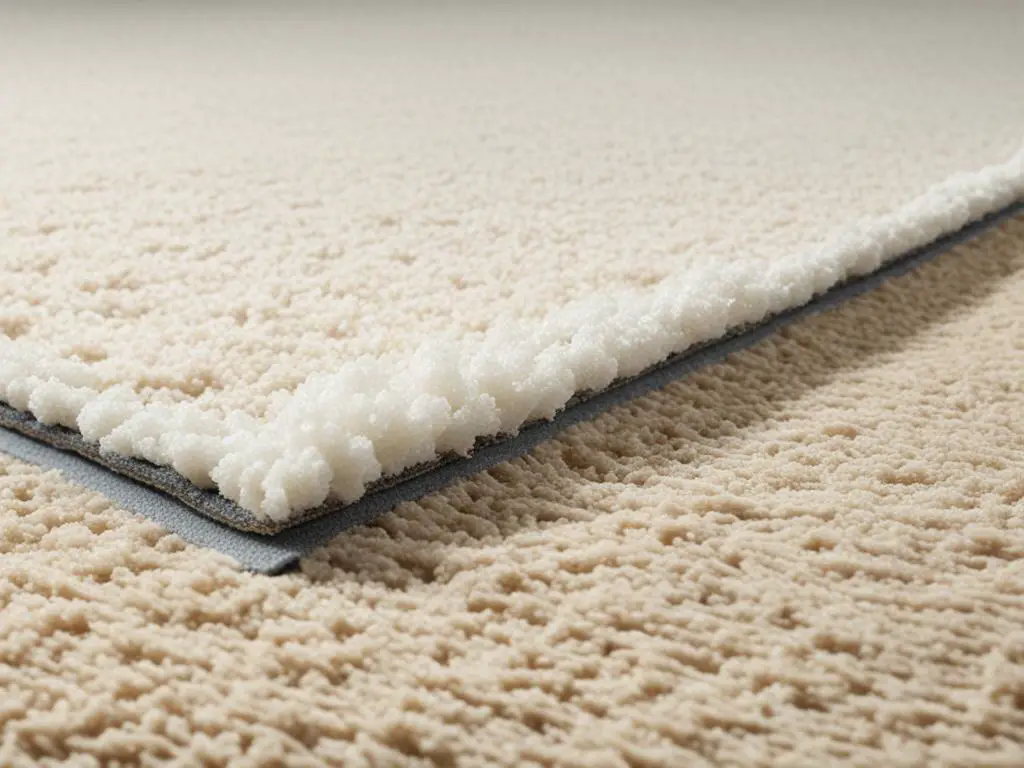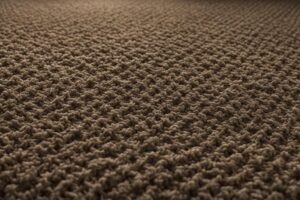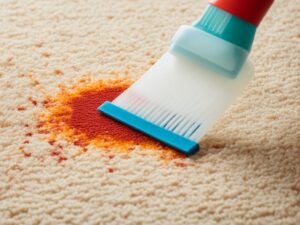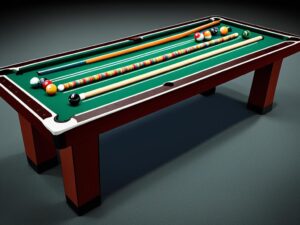When it comes to the layers beneath the carpet on the second floor, there are several components that contribute to the stability and integrity of the flooring. These include the floor covering, underlayment, subfloor, and floor joists.
The floor covering is the visible layer that you walk on, which can be hardwood, laminate, vinyl, carpet, or other materials. The underlayment provides a smooth surface for the floor covering and may also offer sound-dampening and moisture protection properties. The subfloor is the layer directly beneath the underlayment and provides structural support for the flooring. It can be made of wood planks, plywood, OSB, or concrete. Finally, the floor joists are the foundation of the floors, typically made of engineered or dimensional lumber. Together, these layers create a sturdy and functional flooring system for the second floor.
Key Takeaways:
- The layers beneath the carpet on the second floor include the floor covering, underlayment, subfloor, and floor joists.
- The floor covering can be hardwood, laminate, vinyl, carpet, or other materials.
- The underlayment provides a smooth surface, sound-dampening, and moisture protection.
- The subfloor offers structural support and can be made of wood planks, plywood, OSB, or concrete.
- The floor joists are the foundation of the floors, usually made of engineered or dimensional lumber.
The Role of Underlayment in Second Floor Carpets
Underlayment plays a crucial role in second-floor carpets, providing both comfort and protection. While underlayment is typically a separate layer for other types of flooring, carpet padding serves as the underlayment for carpeting.
Carpet padding offers a cushioning effect underfoot, making the carpet more comfortable to walk on. It adds a layer of softness and support that enhances the overall feel of the carpet. Walking on a carpet with proper padding feels plush and luxurious.
In addition to comfort, carpet padding helps with sound-dampening between floors. It absorbs and reduces noise, preventing sound from traveling through the floor and disturbing those in adjoining spaces. This is particularly beneficial for second-floor carpets, where noise control is important for a peaceful living environment.
Moreover, carpet padding acts as a barrier against spills and moisture. It helps to prevent liquids from seeping through the carpet and reaching the subfloor, protecting it from potential damage. Moisture protection is especially crucial in areas where spills and accidents are more likely to occur, such as kitchens or children’s playrooms.
Different materials are available for carpet padding, including fiber, foam, or rubber. The choice of padding material depends on personal preferences and the specific needs of the carpet and subfloor. Each type of padding offers its unique benefits, such as enhanced durability, added insulation, or superior moisture resistance.
In summary, carpet padding acts as the underlayment for second-floor carpets and provides comfort, sound-dampening, and moisture protection. Choosing the right padding material can enhance the overall performance and longevity of the carpet, making it a worthwhile investment.
Exploring Subflooring Options for Second Floors
Subflooring plays a crucial role in ensuring the stability and durability of second-floor carpets. It provides a solid foundation for the flooring materials, contributing to their overall integrity. When it comes to subflooring options, there are several materials to consider, each with its own characteristics and suitability for different flooring types.
Wood Planks:
Wood planks were a popular choice for subflooring in the past. However, due to labor-intensive installation and waste issues, they are rarely used today. While wood planks provide a natural and traditional look, their drawbacks make them less feasible compared to other options.
Plywood:
Plywood is a commonly used subflooring material for second floors. It is made by gluing together multiple layers of solid wood at 90-degree angles, creating a strong and rigid sheet. Plywood offers excellent durability and stability, making it suitable for all types of floor coverings.
OSB (Oriented Strand Board):
OSB is another popular choice for subflooring in second floors. It is made by using large, flat wood chips arranged in layers and glued together. One of the main advantages of OSB is its affordability, making it a cost-effective option. However, it is not recommended for use under ceramics and tiles due to the potential for swelling.
Concrete:
Concrete is commonly used as subflooring in high-rise buildings and basements. It provides a strong and durable surface for flooring materials. However, when using concrete as subflooring, special considerations such as moisture resistance and a smooth surface are essential.
When choosing the right subflooring material for your second floor, consider the specific needs of your flooring materials and consult with professionals if needed. The type of subflooring you select can greatly impact the stability, longevity, and performance of your second-floor carpets.
The Role of Floor Joists in Second Floor Carpets
Floor joists serve as the backbone of the second-floor carpets, providing essential structural support and stability to the entire flooring system. These joists, typically made of engineered wood or dimensional lumber such as plywood or solid wood, play a crucial role in maintaining the integrity and safety of the flooring on the second floor.
Engineered wood, favored for its strength and durability, is a common choice for floor joists. It consists of layers of wood veneers laminated together, creating a solid and reliable material for structural support. Dimensional lumber, on the other hand, refers to solid wood beams or planks, which can also be used for floor joists depending on the specific requirements and load-bearing capacities.
The primary function of floor joists is to bear the weight of the floor covering, underlayment, and subfloor, as well as the occupants of the space. They distribute this weight evenly throughout the flooring system, ensuring that it remains structurally sound and secure. The size and spacing of the floor joists may vary based on building codes, specific structural needs, and the anticipated load they will bear.
It is crucial to ensure that floor joists are properly installed and in good condition to maintain the integrity of the second-floor carpets. Regular inspections and maintenance can help identify any signs of damage or deterioration, such as warping, sagging, or cracking. Addressing these issues promptly can prevent further damage and ensure the ongoing stability of the flooring system.
To summarize, floor joists play a pivotal role in providing structural support for second-floor carpets. Whether made of engineered wood or dimensional lumber, these joists bear the weight of the flooring materials, offering stability and strength. Proper installation, maintenance, and periodic inspections are essential to preserve the integrity and safety of the second-floor carpets.
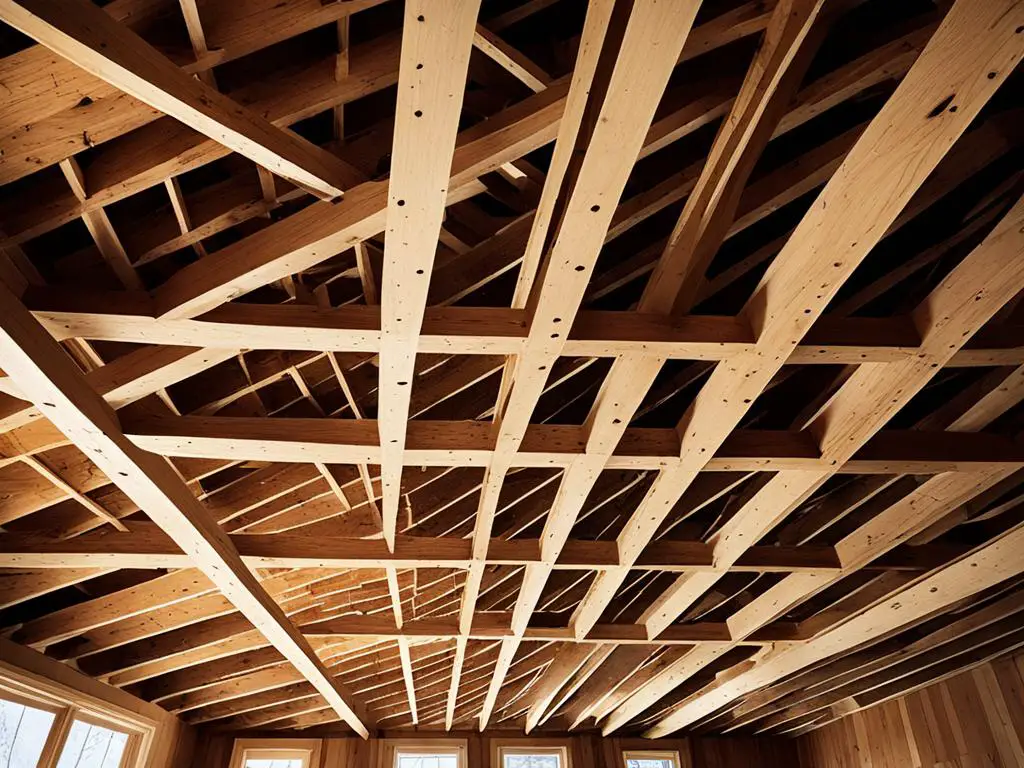
Discovering Wood Floors Under Carpet on the Second Floor
If you’re house hunting or simply curious about whether there are wood floors hidden beneath the carpet on the second floor, there are ways to find out without tearing up the entire flooring. One method is to remove the floor vents, which are usually easy to lift and provide a glimpse of what lies beneath the carpet. Let’s take a closer look at how you can uncover the beauty of wood floors in your home.
“Peeking under the carpet can reveal a hidden treasure of stunning hardwood floors.”
Exploring Floor Vents
Floor vents are a common feature in homes with forced-air heating and cooling systems. These vents provide an opening to the ductwork below, allowing air to flow into the living spaces. You can typically find floor vents in rooms where the main HVAC system distributes air. To investigate whether wood floors exist beneath the carpet, simply remove the floor vent cover.
By lifting the floor vent cover, you’ll get a sneak peek at the flooring materials beneath. In older homes, especially those built before the 1950s, it is more likely to discover wood floors underneath the carpet, as wall-to-wall carpeting became popular during the 1950s. However, even in houses built in later decades, there is still a possibility of wood floors being present, so it’s worth checking.
Alternative Viewing Options
In some cases, floor vents may be inaccessible or non-existent. In such situations, you can explore other areas where the subflooring is visible to catch a glimpse of hardwood flooring. The basement, for instance, often exposes the bare subflooring where you can identify the presence of wood floors. Additionally, certain older homes may have unfinished spaces or crawl spaces where subflooring is exposed, offering an opportunity to examine the flooring materials.
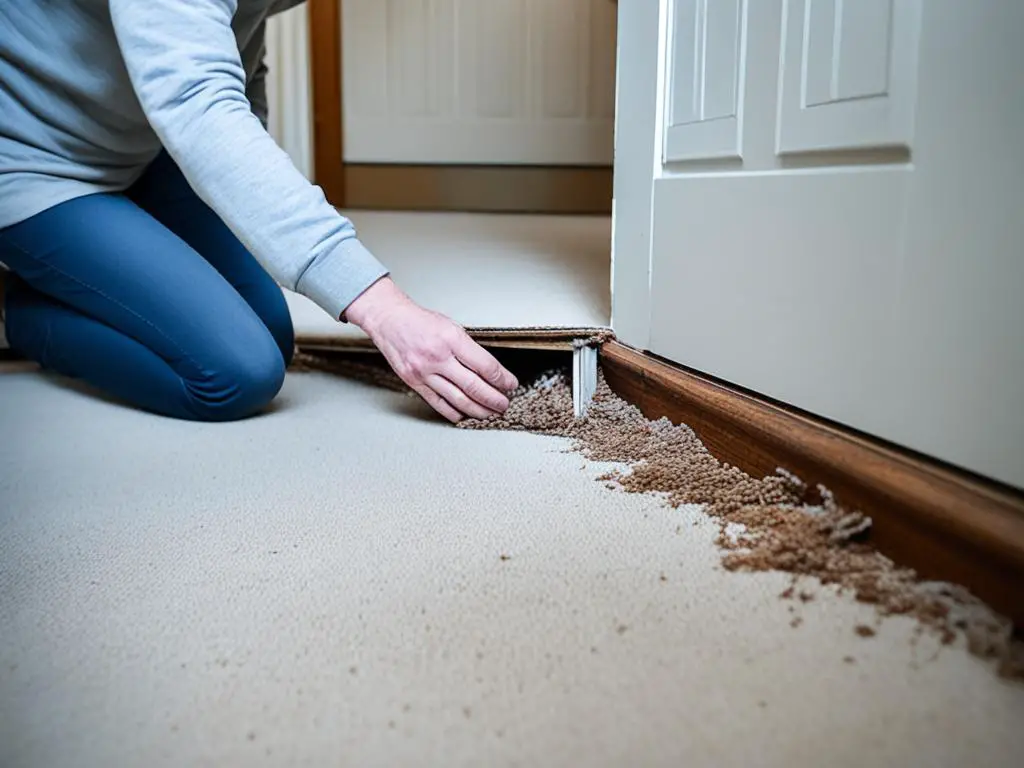
Keep in mind that wood floors may not be present throughout the entire house, so it’s essential to check multiple areas and evaluate the overall condition of the flooring. While discovering wood floors can add value and charm to your home, it’s important to consider factors such as refinishing costs, repairs, and personal preferences before making any renovation decisions.
Refinishing Wood Floors Instead of Installing New Carpet
When you uncover wood floors beneath the carpet on the second floor of your home, you may find yourself faced with a decision – should you install new carpet or refinish the existing wood floors? Refinishing wood floors can be an excellent choice, offering a range of benefits and transforming your space.
Refinishing your wood floors allows you to bring back their natural beauty, restoring their original luster and elegance. Over time, carpeted floors can accumulate scratches and stains, but refinishing can effectively eliminate these imperfections, giving your floors a fresh and renewed appearance.
Furthermore, refinishing wood floors provides you with the opportunity to change the color of the wood if you desire a different aesthetic for your space. Whether you prefer a lighter, darker, or entirely new hue, refinishing can help you achieve the desired look and feel.
However, before making a decision, it’s crucial to assess the condition of the wood floors. If the floors are severely damaged or have structural issues, refinishing may not be the best option. In such cases, consulting with professionals experienced in wood floor restoration can provide valuable insights and guidance.
It’s also essential to consider the presence of lead paint, especially if the house was constructed before 1978 when lead-based paint was commonly used. Conducting swab tests can determine if your wood floors are coated with lead paint, ensuring the safety of your household.
By choosing to refinish your wood floors instead of installing new carpet, you can embark on a cost-effective and environmentally friendly home renovation journey. Preserving and enhancing the timeless beauty of hardwood adds value and elegance to your second-floor spaces.

| Benefits of Refinishing Wood Floors |
|---|
| Restores the natural beauty of the wood |
| Eliminates scratches and stains |
| Allows you to change the color of the wood |
| Cost-effective alternative to carpet replacement |
| Environmentally friendly option |
Conclusion
In conclusion, understanding the various layers that lie beneath the carpet on the second floor is crucial for homeowners and individuals in the midst of house hunting. These layers, including the floor covering, underlayment, subflooring, and floor joists, collectively contribute to the stability, comfort, and functionality of the flooring system.
The floor covering, which can be composed of materials such as hardwood, laminate, vinyl, or carpet, not only enhances the aesthetic appeal of the space but also determines the overall functionality and durability of the floor. The underlayment, whether it is padding for carpeting or separate materials for other types of flooring, plays a vital role in providing additional comfort, sound-dampening properties, and moisture protection.
Subflooring, consisting of various materials such as wood planks, plywood, OSB, or concrete, serves as the foundation of the flooring system. It offers structural support and a stable surface for the floor covering and underlayment, ensuring the longevity and integrity of the overall structure. Floor joists act as the backbone of the flooring system, bearing the weight and providing stability for the entire floor.
By comprehending the functions and significance of these flooring layers, homeowners can make informed decisions about their flooring options and renovations on the second floor. Whether it involves choosing the appropriate floor covering, selecting the right underlayment, or evaluating the condition of subflooring and floor joists, understanding these components is essential for creating a safe, durable, and visually appealing flooring system.
